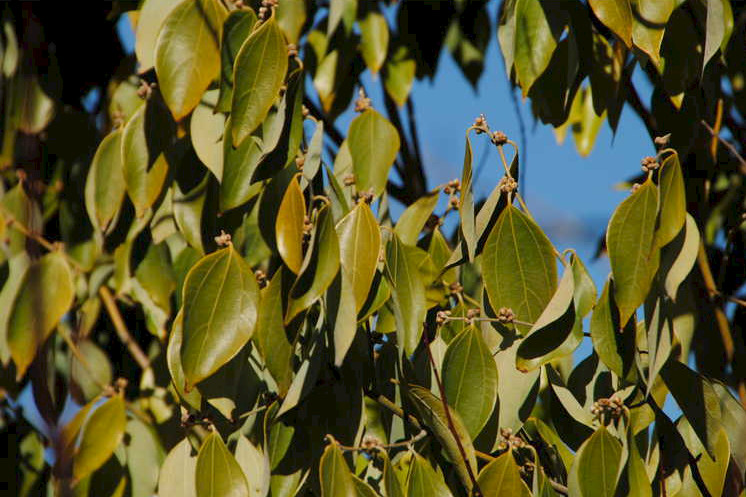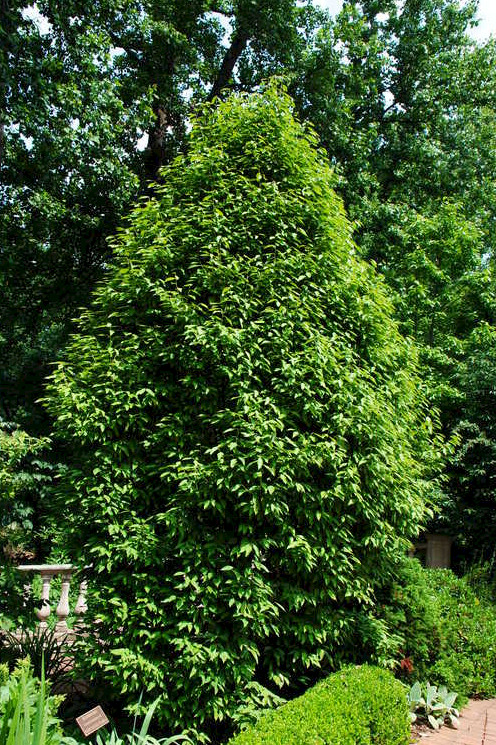Lindera floribunda
Sponsor
Kindly sponsored by
a member of the International Dendrology Society
Credits
Julian Sutton (2023)
Recommended citation
Sutton, J. (2023), 'Lindera floribunda' from the website Trees and Shrubs Online (treesandshrubsonline.
Genus
Synonyms
- Lindera gambleana var. floribunda C. K. Allen
Other taxa in genus
- Lindera aggregata
- Lindera akoensis
- Lindera angustifolia
- Lindera assamica
- Lindera benzoin
- Lindera chienii
- Lindera communis
- Lindera erythrocarpa
- Lindera fragrans
- Lindera glauca
- Lindera megaphylla
- Lindera melissifolia
- Lindera metcalfiana
- Lindera neesiana
- Lindera obtusiloba
- Lindera praecox
- Lindera pulcherrima
- Lindera reflexa
- Lindera rubronervia
- Lindera sericea
- Lindera tonkinensis
- Lindera triloba
- Lindera umbellata
Small evergreen tree to 10 m. Young branchlets densely grey-brown pubescent. Buds ovate, with densely grey-pubescent scales. Leaves trinerved; blade membranous, obovate or elliptic, 7–10(–11) × 4.5–6.5 cm; upper surface dull green and glabrous, lower surface glaucous with dense yellow-brown (or grey-brown?) hairs (but Cui & van der Werff 2008 contradict themselves on hair colour); margin entire; apex acuminate; petiole ~1 cm. Umbels in groups of 3–7 on short branchlets, each umbel with 4 involucral bracts, silvery hairy outside, glabrous inside, and 5 flowers. Male flowers with 6 tepals and 9 fertile stamens; female flowers smaller, with nine fasciated staminodes and a disc shaped stigma. Fruit ellipsoidal, reddish brown to black, ~0.8 × 0.4 cm. Flowering March–April, fruiting April–August (China). (Cui & van der Werff 2008; Grimshaw & Bayton 2009).
Distribution China Gansu, Guangdong, Guizhou, Hubei, Hunan, Shaanxi, Sichuan
Habitat Mixed forests on mountain slopes or riversides; 300–1300 m.
USDA Hardiness Zone 8-9
RHS Hardiness Rating H4
Conservation status Least concern (LC)
Lindera floribunda is very poorly known, both to botany and to horticulture, but would seem to be worth the attention of gardeners, at least for its evergreen leaves which are densely hairy and glaucous beneath. While the specific name seems to promise abundant flowers, a range of images on the Plantplus website (Chinese Academy of Sciences 2023) does not raise such high hopes. We can find no evidence as to fruit colour.
Among the species we describe with tri- or triplinerved evergreen leaves, Lindera floribunda belongs to a tight-knit group with L. aggregata and L. pulcherrima. All three have rather rounded leaves, the sort of shape in which even quite a minor variation in outline could lead to them being classed as ovate, obovate or elliptic; all have acuminate to caudate leaf apices. L. fragrans and L. tonkinensis have proportionately narrower leaves, tending rather more towards lanceolate (Cui & van der Werff 2008; Chinese Academy of Sciences 2023). Beyond this, identification becomes trickier. L. aggregata has golden hairs on the young shoots and leaf undersides, while in L. pulcherrima they are white. As for L. floribunda, the key and species description in Flora of China (Cui & van der Werff 2008) contradict one another on hair colour, and Allen’s (1941) comments are hard to interpret since her species were delineated differently. Such is life with the Lauraceae.
Lindera floribunda was first described as L. gambleana var. floribunda (Allen 1941), from herbarium specimens collected in Yunnan by George Forrest (typical L. gambleana is now treated as L. pulcherrima var. hemsleyana, and is probably not in cultivation). Just one introduction to western gardens has been identified as L. floribunda, WD 137 (collected Hubei,1994, by one of the NACPEC expeditions). A specimen from this collection seen at Quarryhill, CA in 2004 was 1.8 m tall and still shrubby, the leaves attractive with glaucous underside and golden hairs, at least when young; the three principal veins were paler than the leaf surface and thus rather conspicuous (Grimshaw & Bayton 2009). Another from the same collection was still alive at the US National Arboretum in 2016, while material at the Arnold Arboretum died (US National Arboretum 2023; Arnold Arboretum 2023).


